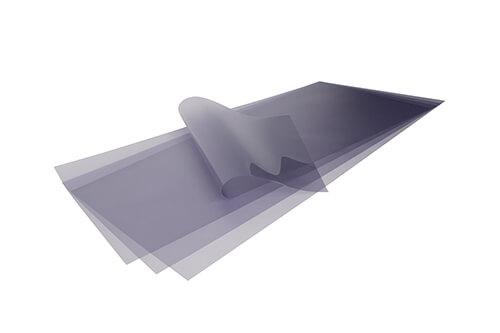Now more than ever, companies have been increasingly committed to providing a healthy work environment. While most of the focus over the years has been on posture and ergonomics, experts have come to realize that lighting also plays a crucial role towards a healthy and productive work environment.
Reviewed and updated for 2024 by Molly Duong, M.D.
Recently, a colleague shared a story about his first job experience as a temp at an insurance company. Every day, as the sun rose, he walked to his job in a windowless building with artificial lighting. He would leave at the end of the day as the sun was setting, often without having seen the sun all day. At first, he gave it little thought – but the longer he worked at the company, the worse he felt. The dim lighting, strain from staring at his computer all day, and lack of sunlight started to affect his overall well-being. Although he hadn’t realized it yet, the lack of proper lighting was taking its toll.
Workers spend on average 5 hours and 42 minutes at their desk each day.
Eight Ergonomic Lighting Tips
If your office space has a lack of natural light, you can still make some simple improvements.
Ergonomic Lighting Tips
Ergonomic office lighting can help improve your employees’ quality of life, and in return, promote their efficiency. Poor lighting has been shown to host negative side effects. These include, but are not limited to:
- Eye strain
- Headaches & Migraines
- Lower productivity
- Mental unwellness
- Dissatisfaction
- Fatigue
- Difficulty in color matching
By making a few simple changes to your office space, you can avoid these negative side effects and create a happier workplace overall.
Step one: Determine the type of lighting you need.
Different spaces require different types of lighting for optimal efficiency.
- Direct Lighting is best used for individual workstations, as the light shines directly onto the subject. It does create shadows, so it’s best used as a supplemental source of lighting.
- Direct-Indirect Lighting is often used in manufacturing, as it produces little glare. This type of light is emitted both upwards and downwards. One key thing to note, however, is that it’s important that the walls, ceilings, and floor are all light-colored to be able to utilize this lighting’s effects.
- Indirect light fixtures are most often used in office settings. They cast most light towards the ceiling. They create even illumination in the workspace and disperse the light in a more natural manner.
- Shielded light fixtures use different covers and lenses to filter and distribute the light over the workspace. They are found most often in office settings. You often see these as large, boxed lights containing fluorescent lighting or as fixtures flush to the ceiling (see parabolic vs prismatic).
Step two: Evaluate your workspace using the following checklist.
- Is there any natural light? If so, is there sufficient natural light?
- Is there enough lighting to complete the task(s)?
- Are the transition areas between light and dark infrequent?
- Do employees complain of visual strain?
- Is there significant glare anywhere in the workspace?
These questions will help you determine how effective your current office lighting layout is, and whether it might benefit from more ergonomic choices. However, these questions are not fully diagnostic, and your office may benefit from a detailed light survey with technical equipment that measures illuminance, luminance, contrast, and reflectance.
Step three: Ensure that you don’t have a flicker problem.
You’re probably familiar with the flickering lights in horror movies, or the annoying flickering light in your bathroom. However, flickering light isn’t always detectable by the naked eye. Nevertheless, negative side effects from prolonged exposure to flickering lights can still arise. If your employees complain of eye strain and headaches, it may be an indication that your workplace has a flickering-light problem.
You can fix this in three easy steps:
- Upgrade to lighting with electronic ballasts.
- Ensure that all parts of the lights are working.
- Schedule bulb replacement on a regular basis.
Step four: Provide task lighting for all employees.
This one is fairly straightforward. You can simply provide lighting at each workstation that allows each employee fullcontrol. This gives every employee flexibility to control how much light they need to complete their tasks, improving moods and reducing eye strain.
Step five: Expose workers to natural light.
Make sure that employees get exposure to natural, full-spectrum light. If they are not seated within 8 feet of a window, encourage them to go outside periodically throughout the work day.
In a research poll of 1,614 North American employees, we found that access to natural light and views of the outdoors are the number one attribute of the workplace environment
The big question is, will paying attention to proper office lighting really affect the overall performance of your employees? A study by the Journal of Occupational and Environmental Medicine indicates that 40% of U.S. workers experience fatigue, which carries with it a cost of approximately $136 billion in productivity (84% related to reduced performance at work). In many cases, fatigue can be directly linked to poor lighting. When we compare the costs of implementing ergonomic office lighting to the costs of reduced productivity, it becomes an easy choice.
Returning to my colleague’s work story, it is suffice to say that he didn’t stay at that company for long. Though he continued to work in temp jobs that were largely indoors, he found that companies that spent the money to upgrade their facilities tended to have an overall better retention rate (and he and his coworkers had a much higher job satisfaction rate). In our view, 2021 is the year where businesses should dedicate themselves to rejecting old assumptions about what constitutes “proper” office lighting and instead focus on providing ergonomic office lighting.
It takes only five simple steps– identify the lighting needed, evaluate the workspace, ensure there is no flicker problem, ensure each employee has access to task lighting, and provide exposure to natural light – to set your business up with a more ergonomic environment. Doing so can reduce symptoms like eyestrain, headaches, lower productivity, fatigue, unhappy employees, and inconveniences such as having difficulties with color matching.
Let’s be honest: when was the last time you gave any thought to your office lighting? I would guess that it wasn’t until you did a search for it. In 2021 and beyond, we have an opportunity to change our mindsets and improve our workplace for the better – and it can start with changing our lighting.
About Dr. Molly Duong
Dr. Molly Duong is a therapeutic and glaucoma certified optometrist. She obtained her doctorate degree at the University of California Berkeley, School of Optometry, and graduated with Honors in Research. Upon graduation, she completed a residency at the Major Charles Robert Soltes Jr. Blind Rehabilitation Center located at VA Long Beach, gaining expertise in primary care, low vision, and traumatic brain injury cases.
She is passionate about expanding innovations in technology and medical devices to improve vision care, and is always looking to build her professional acumen. On top of patient care, she also works in medical writing for ophthalmic trade articles and blogs, as well as consulting for a new vision-based web application in development.


Thank you for your comprehensive guide on ergonomic office lighting! Your blog provides invaluable tips for optimizing workspace illumination, promoting comfort, and reducing eye strain.